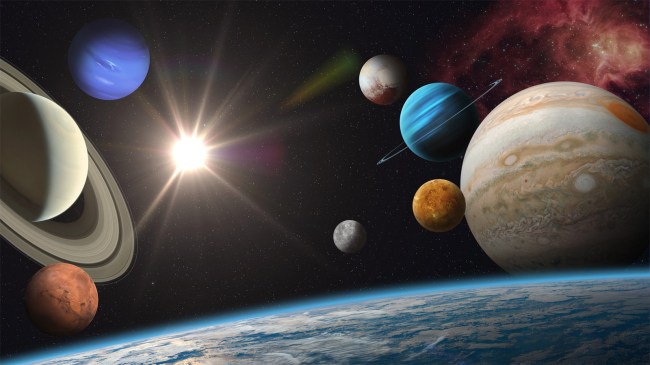iStockphoto
Since the discovery of Neptune in 1846, scientists have postulated that there is yet another planet, Planet 9, lurking in our solar system.
Originally called Planet X (not the Roman numeral 10, but just a a placeholder, and not to be confused with Planet X, the doomsday planet Nibiru), Planet 9 is believed to be located, as NASA puts it, “on the icy outer edges of our solar system, hiding in the dark.”
This belief was recently reinforced by a group of scientists from the California Institute of Technology, Université Côte d’Azur and Southwest Research Institute in a research paper on the arXiv preprint server.
This new study points to a “a new line of evidence supporting the existence” of Planet 9.
“The solar system’s distant reaches exhibit a wealth of anomalous dynamical structure, hinting at the presence of a yet-undetected, massive trans-Neptunian body – Planet 9,” the researchers wrote. ”
Previous analyses have shown how orbital evolution induced by this object can explain the origins of a broad assortment of exotic orbits, ranging from those characterized by high perihelia to those with extreme inclinations.”
Phys.org reports that after using computer simulations of different scenarios and data they compiled by tracking the movements of long-period objects that cross Neptune’s orbit and exhibit irregular movements during their journey, they concluded, “Accounting for observational biases, our results reveal that the orbital architecture of this group of objects aligns closely with the predictions of the P9-inclusive model. … Accounting for observational biases, our results reveal that the orbital architecture of this group of objects aligns closely with the predictions of the P9-inclusive model.”
Eight years ago, these same Caltech researchers found other evidence of this huge Planet 9, which has a mass about 10 times that of Earth and is so far away that it would take it between 10,000 and 20,000 years to make just one full orbit around the sun.
“There are now five different lines of observational evidence pointing to the existence of Planet 9,” said Caltech astrophysicist Konstantin Batygin. “If you were to remove this explanation, and imagine Planet 9 does not exist, then you generate more problems than you solve. All of a sudden, you have five different puzzles, and you must come up with five different theories to explain them.”
If all of this turns out to be true, NASA states, “Planet Nine could turn out to be our missing super Earth.”

